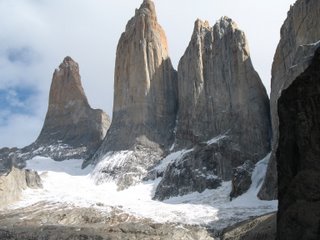The Lake District

Bariloche, located on the shores of lake Nahuel Haupi, has a slight alpine feel and the weather for my visit was decidedly chilly. Hired a bike and headed out on the circuito chico, a 60km loop that takes in the beauty of the surrounding area. However my trek the following day was curtailed by a heavy bout of rain and I decided to move on to warmer climes. Took the picturesque 7 lakes route to San Martin Los Andes, lots of beautiful lakes surrounded by snow capped mountains and then onto Pucon, Chile. The imposing structure of volcano Lanin, making a dramatic backdrop to the border crossing.



Pucon, is the country`s adventure capital. Did some excellent rafting along grade IV rapids, but the highlight of my stay was the ascent of the Villarica volcano. The volcano is still active and smoking away gently but hasn´t had a major eruption since 1984. To get to the 2500m summit its a 4 hour trek up the steep lava and ice covered slopes. Although you have to wear crampons and use an ice axe, the climb isnt that technical. The panorama from the top was quite amazing. Going back down was the best bit as you get to slide down the ice chutes at great speed using your ice axe as a brake ! A bit like the luge in the winter olympics and top fun.






















